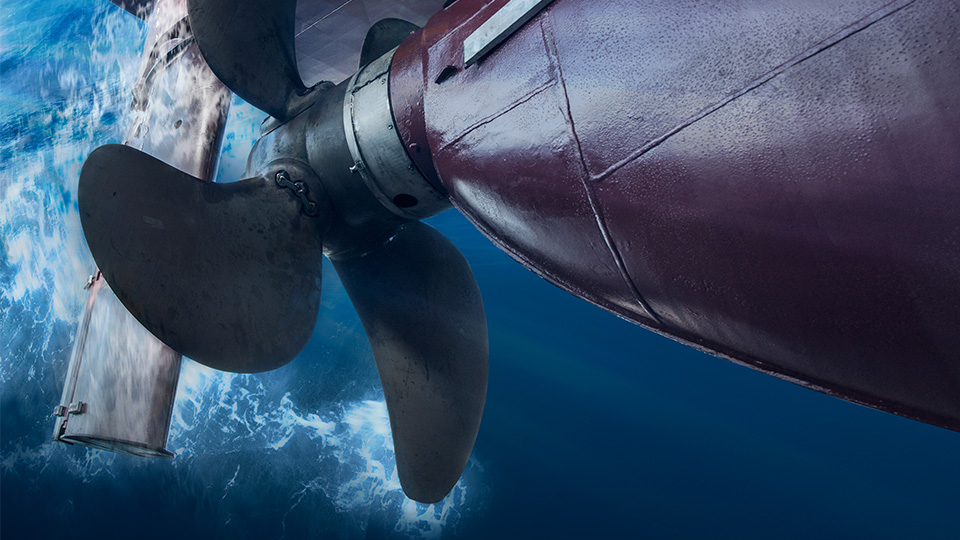
CONTACT BIMCO
Jeppe Skovbakke Juhl
Manager, Maritime Safety & Security
Copenhagen, Denmark
- +45 4436 6871
- hsse@bimco.org

Focus on underwater radiated noise from shipping has grown significantly over the past few years. Consequently, the International Maritime Organization (IMO) has decided to raise awareness of the subject by issuing updated non-mandatory guidelines with the aim of monitoring the impact and thus ascertaining the efficacy of various mitigation solutions.
There has been a significant increase in the focus on underwater radiated noise from commercial shipping, particularly because the adverse impact on marine life has been identified as relevant to the UN Sustainable Development Goal number 14 about life below water. The IMO is now considering how to reduce this noise.
Underwater noise and its impact on the marine environment are not covered by mandatory IMO regulations. However, the IMO agreed in 2009 to initiate the development of non-mandatory technical guidelines and subsequently approved guidelines in 2014. See MEPC.1/Circ.833.
The 2014 guidelines focus on primary sources of underwater noise such as propellers, hull form, onboard machinery, and include various operational and maintenance recommendations such as hull cleaning. Owing to the complexity of the issue, the 2014 guidelines did not set future targets for underwater sound levels as research was needed on underwater radiated noise measurements.
However, due to increased focus, IMO agreed in 2021 to review the existing the guidelines in order to encourage the uptake and awareness of the subject and to ascertain the efficacy of various mitigation solutions. The aim was to provide updated recommendations based on the latest developments in ship design and technology, and to address potential hurdles that could prevent general implementation of the recommendations set out in the guidelines.
The newly-updated guidelines were finalised last week during the IMO sub-committee meeting on ship design and construction. They may be applied to any ship, taking into account their design, construction and modifications as well as their operation.
Although still subject to approval by the IMO’s Marine Environment Protection Committee in June 2023, the draft guidelines are intended to assist relevant stakeholders in establishing mechanisms through which noise reduction efforts can be achieved.
Given the complexities associated with ship design and construction and the various approaches to reducing underwater radiated noise, and taking into account the fact that ships have different noise profiles and not all ship designs can be optimised further to reduce noise, the new non-mandatory guidelines recommend that shipowners and designers should undertake noise management planning at the earliest design stages. Similarly, underwater radiated noise management planning may be conducted for existing ships as far as reasonable and practicable.
The new attempt to establish noise management planning is intended to be a flexible tool that allows a customised approach suitable to an individual ship's design and operation. The management plan can be a simple and high level document. It could also include establishing the baseline (predicted or actual) of a ship's underwater radiated noise, setting targets which should be specific and quantitative where possible, and evaluating various technological, operational and maintenance approaches to noise reduction, either individually or in combinations.
To help guide shipowners and designers in establishing a management plan, the guidelines offer two model templates with different levels of detail.
The guidelines contain an overview of approaches applicable to designers, shipbuilders and ship operators by providing a catalogue of options on how to integrate new and advancing technologies and ship design solutions.
The revised guidelines also include a dedicated section about the relationship between the Energy Efficiency Compliance Measures and underwater radiated noise. Many of the energy efficiency improvement options to meet energy efficiency regulations (EEDI, EEXI and CII) can result in an improvement in underwater radiated noise performance and could therefore provide positive synergies with climate policies. However, it is important that management planning tools also help identify the risk of noise increasing, and thus mitigate this.
Although monitoring underwater radiated noise is non-mandatory, financial, insurance institutions and others are encouraged to promote the establishment of incentive schemes to support the implementation of monitoring programmes where appropriate.
Examples of potential incentive schemes:
Examples of incentives include discounts on port dues, fairway fees, discounts, extra services or products and promotions.
The revised guidelines will be circulated as soon as they are approved by the IMO in June 2023.
REGISTER FOR BIMCO'S WEBINAR ABOUT UNDERWATER RADIATED NOISE ON 3 MAY 2023